It’s quite difficult to keep track of sharks in the sea, especially with their movement and eating habits. However, GPS technology has recently introduced a new technique for studying shark migratory routes and life habits, offering more exact data. Scientists determine a shark’s age by counting the number of growth rings that form on shark vertebrae for a year. Nonetheless, the average life expectancy differs by shark species. Moreover, sharks in captivity have a shorter life expectancy than sharks in their natural environment.
While sharks are among the most feared marine creatures on the planet, there are still a plethora of things we do not know about them. Reports of sharks submitting themselves to human friends are uncommon but not non-existent. With that in mind, we can’t help but wonder: how long do sharks live? Below, we will discover most shark species’ average lifespan, their lifecycle, and the oldest shark on record.
How Long Do Sharks Live?
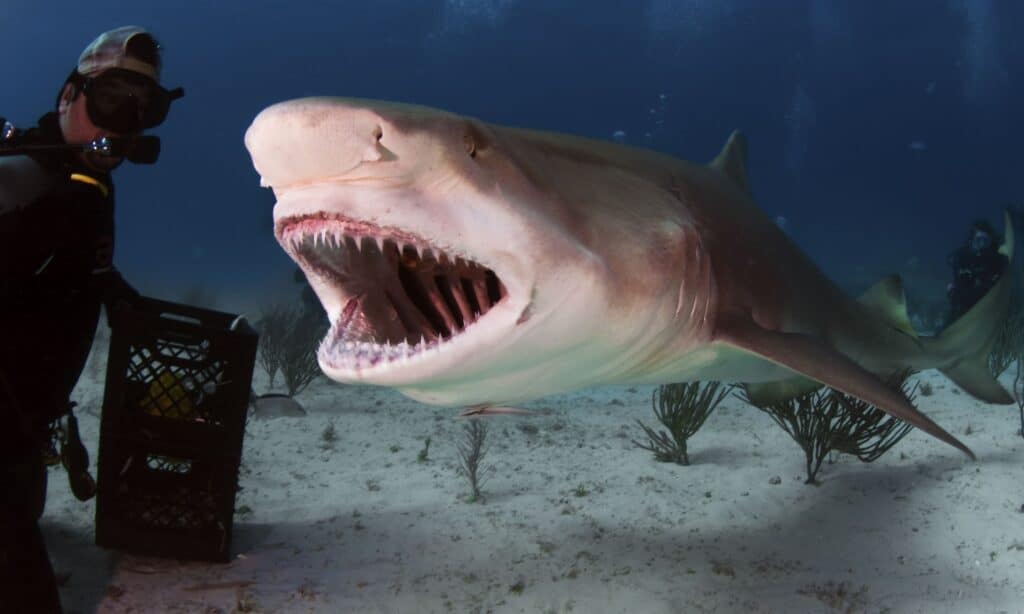
The average lifespan for sharks in the wild is 20 to 30 years.
©Greg Amptman/Shutterstock.com
Shark lifespan differs based on species. So how long do sharks live? Sharks generally live for 20 to 30 years in the wild, and some sharks can also live significantly longer than others.
How long do sharks live in captivity compared to in the wild? Whale sharks, for instance, are likewise thought to live for more than 100 years, implying that the time for sexual development is lengthy, and the progeny will take longer to be born. However, whale sharks in captivity are not happy, and on a few occasions, they have perished within days, with a maximum lifespan of only 8 years.
On the other hand, tiger sharks live for an average of 27 years in the wild, while some have been known to live up to 50 years. Tiger sharks in captivity, like other species, do not thrive as long as they do in the wild, living just 17 to 20 years.
The Average Life Cycle of a Shark
Other shark species live longer or shorter lives than other sharks, and some even live as long as humans. Within the average of 20 to 30 years of a shark’s lifespan, they go through five stages of life: Fertilization, Incubation, Pups, Subadults, and Adults. Below, we will look at a shark’s life cycle:
Stage 1: Fertilization
The beginning of a shark’s life begins with fertilization. Shark mating is a little-known phenomenon, with researchers and experts rarely observing it. Internal fertilization of the female egg happens. The claspers, a set of organs that resemble mammalian genitalia, have evolved from the male’s pelvic fin.
Stage 2: Incubation & Gestation
In the second stage of a shark’s life cycle, sharks carry their offspring in three ways: oviparity, viviparity, or ovoviviparity.
In oviparity, sharks deposit eggs, generally protected by a leathery egg casing. Species that have a placenta to feed and sustain their offspring are said to be viviparous, where the pups are born alive and well developed. On the other hand, laying eggs inside the body is called ovoviviparity. Sharks are primarily ovoviviparous. The pups hatch from these eggs and stay inside for a while. Then, they are eventually born alive and completely formed. In some shark species, cannibalism occurs when the first pup to hatch eats the rest of the eggs while still inside its mother.
For ovoviviparous species, the gestation duration is unknown. However, it might take a few months to more than two years.
Stage 3: Pups
Pup is the term used for newborn sharks. Great white sharks normally only have one or two pups at a time, whereas other sharks can have up to 20 pups in a litter. About 40 percent of the approximately 400 shark species lay eggs, and the others give birth to live young in large numbers. The pups are usually 4 to 5 feet long at birth and completely self-sufficient. They will rapidly swim away from their mother and begin searching for small water creatures.
Stage 4: Subadults
For many years, sharks are not considered fully developed adults. In reality, a shark’s maturation can take up to 15 years. Until they reach adulthood, most sharks stay near to their birthplace. Yet, many sharks perish before reaching adulthood due to their slow growth.
Stage 5: Adults
Adulthood is the final stage of a shark’s life cycle, and they can start procreating once they reach adulthood. Sharks devote most of their adult lives foraging for food. Sharks, unlike humans, do not sleep. Most sharks die after 20 to 30 years, while some species live more. The spiny dogfish and some whale sharks, for instance, can live for almost a century.
How Long Do Various Shark Species Live?
While sharks have a general lifespan, some of them live either less or more years than others. Here are the specific lifespans of some certain shark species:
Great White Shark – 40 to 70 years
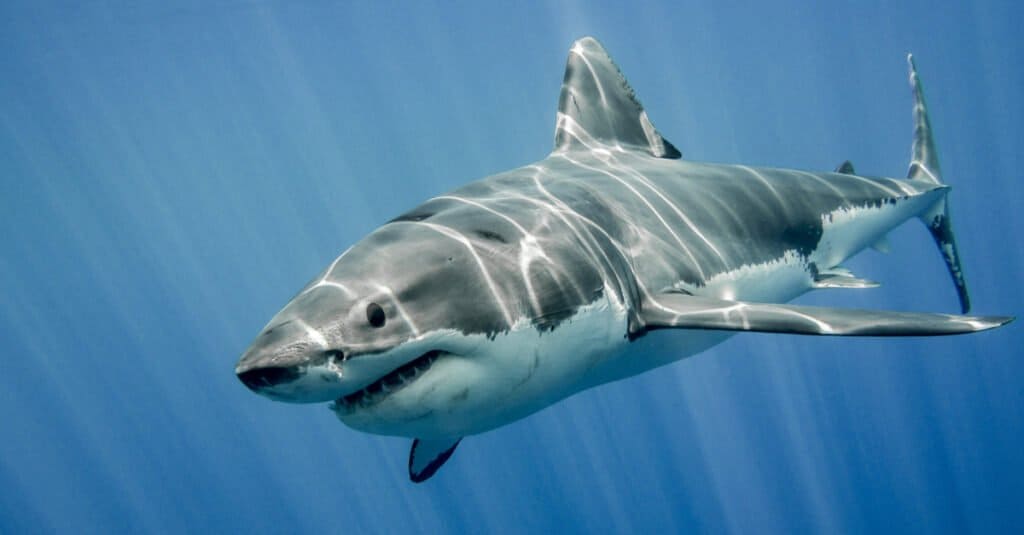
The great white shark has a lifespan of 40 to 70 years.
©Ramon Carretero/Shutterstock.com
A great white shark’s lifespan ranges from 40 to 70 years, which is a significant deviation from what scientists previously believed. Up until 2014, scientists believed that great white sharks had a lifespan of only 25 to 30 years. According to research done by the Marine and Freshwater Research Institute, white sharks may grow more slowly and live longer than previously assumed. The researchers utilized eight sharks of various sizes and found that their ages were consistent across a 44-year period. As a result, scientists concluded that white sharks in the western North Atlantic can live for up to 73 years.
Bull Shark – 16 years
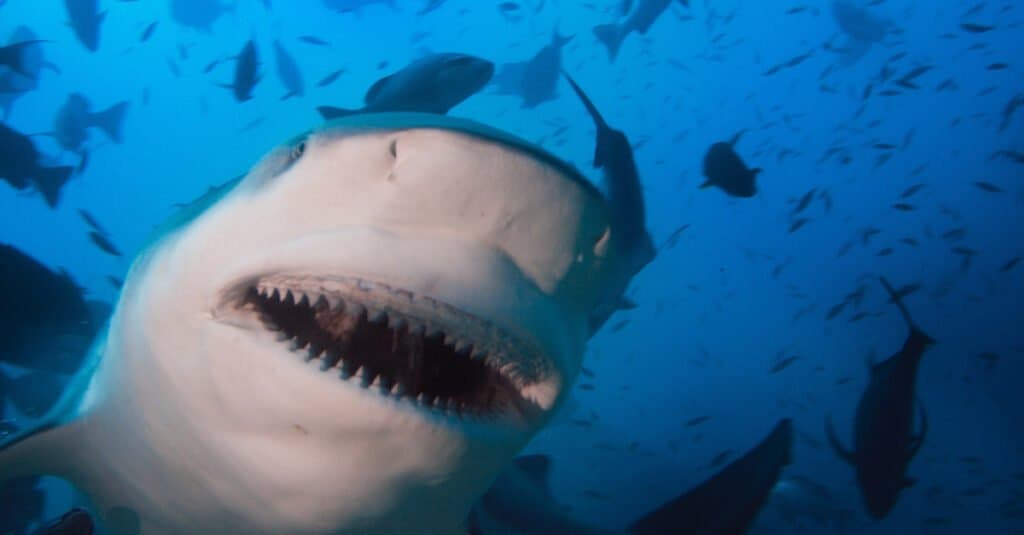
Bull sharks have a lifespan of 16 years in the wild.
©Willyam Bradberry/Shutterstock.com
In the wild, bull sharks live for an average of 16 years. It is feasible for them to live for longer periods of time, particularly in an aquarium. The world’s oldest bull shark lived to be 32 years old. These sharks reach sexual maturity between the ages of 8 and 10. They come together for mating but then split up rather than staying together for an extended period. They reproduce from late summer to early autumn, frequently congregating in rivers or estuaries between rivers and the sea.
Spiny Dogfish – 25 to 100 years
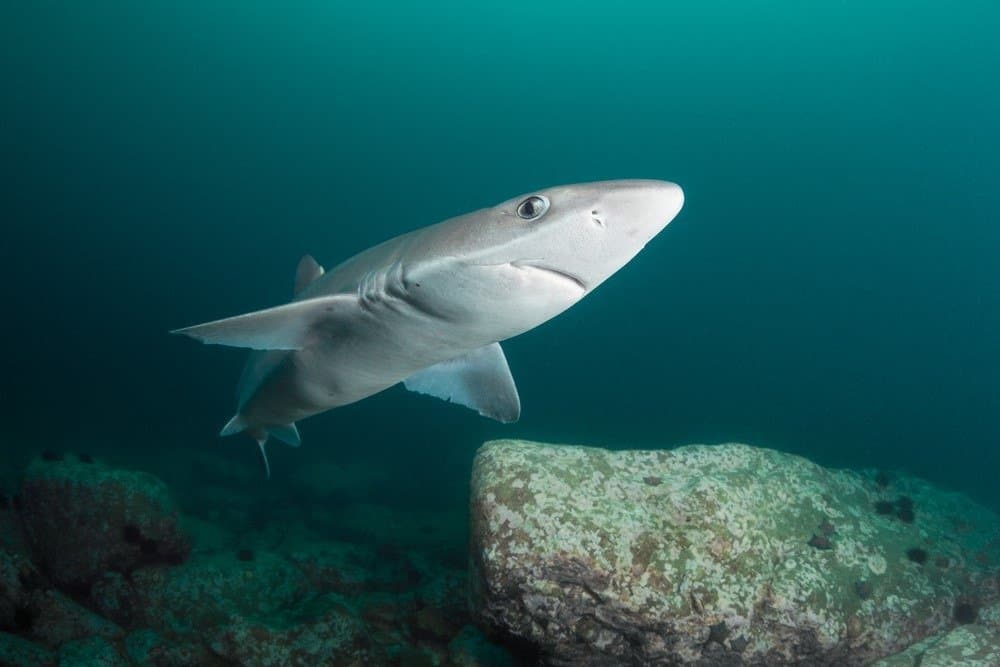
The gestation period of a spiny dogfish lasts from 18 to 24 months.
©Boris Pamikov/Shutterstock.com
The spiny dogfish, also known as a spurdog, mud shark, or piked dogfish, is a small, slow-growing shark that belongs to the dogfish shark family and lives between 25 and 100 years. This species’ gestation period lasts from 18 to 24 months, making it the world’s longest known animal gestation period. Due to its late maturity and longer reproductive time, this shark is another endangered species.
Leopard Shark – 30 years

Leopard sharks
can live up to 30 years.
©evantravels/Shutterstock.com
The leopard shark has a 30-year lifespan and is distinguished by massive dark patches on the dorsal side. These sharks do not migrate and prefer to remain in one location. As a result, there are some genetic distinctions between groups living in different areas. The leopard shark reaches sexual maturity at the age of ten and has a gestation period of 10 to 12 months. Their brood can range from 4 to 33 pups when they give birth, each measuring 8 to 9 inches in length. During the summer, they can be found in high numbers along the shore, with the majority of them being pregnant female sharks.
Hammerhead Shark – 25 to 44 years
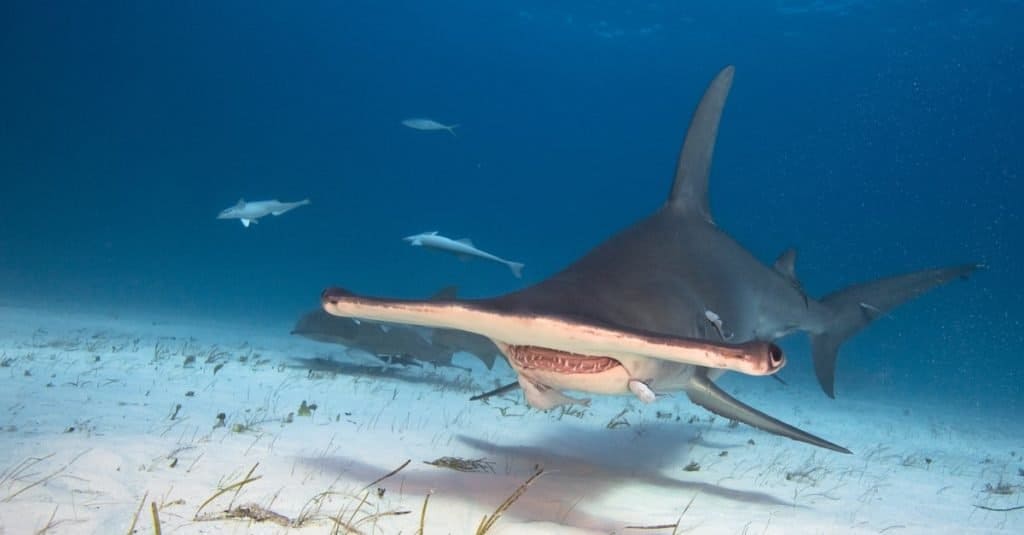
The hammerhead can live up to 30 years.
©frantisekhojdysz/Shutterstock.com
The normal lifespan of this shark is 25 to 30 years. However, some individuals have lived as long as 44 years. The hammerhead shark is a modern-day shark with fossil evidence reaching back to the Cretaceous period. The shark’s evolution included shrinking in size, allowing them to devote more energy to reproduction rather than growth. Interestingly, hammerhead sharks travel in schools throughout the day, but they split apart to hunt alone after dusk.
What is the Oldest Shark on Record?
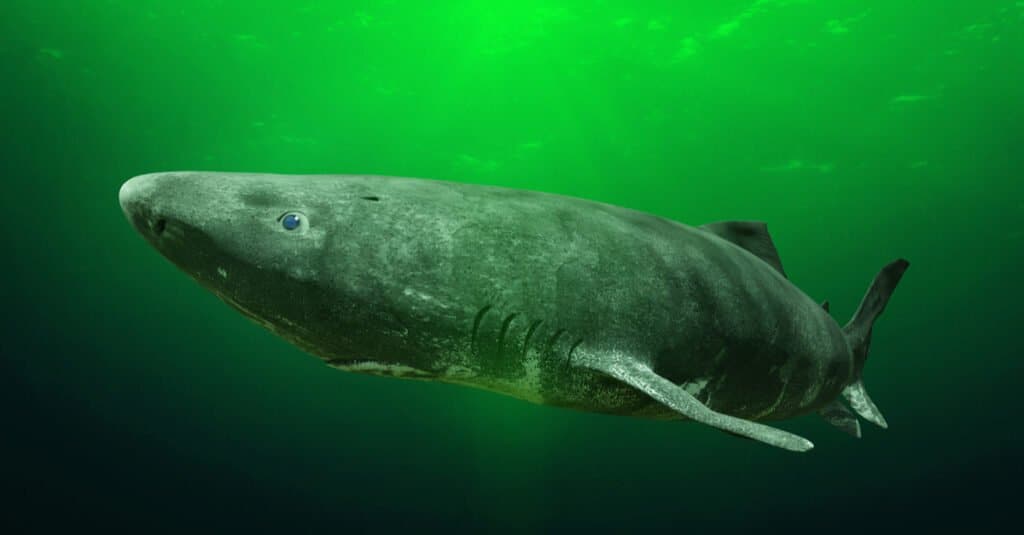
The Greenland shark can reach a maximum weight of over 2,000 pounds.
©Dotted Yeti/Shutterstock.com
The Greenland shark is the world’s oldest shark. Also known as eqalussuaq by the Inuit, this shark is known for surviving to a ripe old age. It has a minimum lifespan of 250 years, but scientists believe it might live up to 500 years! Its longevity is most likely since it takes its time with everything. It moves slowly in the water and takes a long time to reproduce. It attacks prey by sneaking up on them while they are sleeping.
This shark lacks the standard age markers that scientists use to determine its age. Instead, a protein was identified inside the shark’s eyes. This protein is generated prior to the shark’s birth and does not degrade as the shark grows. It has been carbon-dated, providing an exact age estimate. The ages of the Greenland shark research subjects were determined using radiocarbon dating, and one female was estimated to be around 400 years old.
Scientists also uncovered that these sharks develop at a pace of less than 1 cm per year, despite reaching nearly 20 feet. Thus, age can be estimated based on the shark’s length using this method. With such estimates, the Greenland shark takes home the crown as the longest-living vertebrate.
The Greenland shark’s sexual maturity is estimated to be around 100 years. Because Greenland sharks have such a long lifespan, even eliminating one mature shark harms its population. Greenland sharks can grow up to 24 feet long, which is comparable to the length of a great white shark.
The photo featured at the top of this post is © Richard Whitcombe/Shutterstock.com
Thank you for reading! Have some feedback for us? Contact the AZ Animals editorial team.







